Hawaii is among the most beautiful Islands in North America because of its lush vegetation. Even because of this, the island has been nicknamed ‘’Paradise of the Pacific’’. The greenery of Hawaii is filled with trees, flowers, shrubs and many plant species.
Hawaii has a tropical climate and of all the vegetation, trees are a common feature everywhere from Hawaii, Honolulu, Kalawao, Kauai to Maui counties.
Some trees have been in Hawaii for centuries whereas others were introduced after the arrival of the Europeans in Hawaii. In Hawaii few trees grow in urban settings and home gardens, majority of the trees are mostly found in the rain forests, dense thickets and scrub lands where you will find numerous varieties of trees from conifers, Indigenous, palm, deciduous to evergreen trees.
If you are visiting Hawaii for the first time and you want to learn about Hawaiian vegetation specifically trees, then this article will be of help to you in this regard.
Description
Tropical Almond Trees
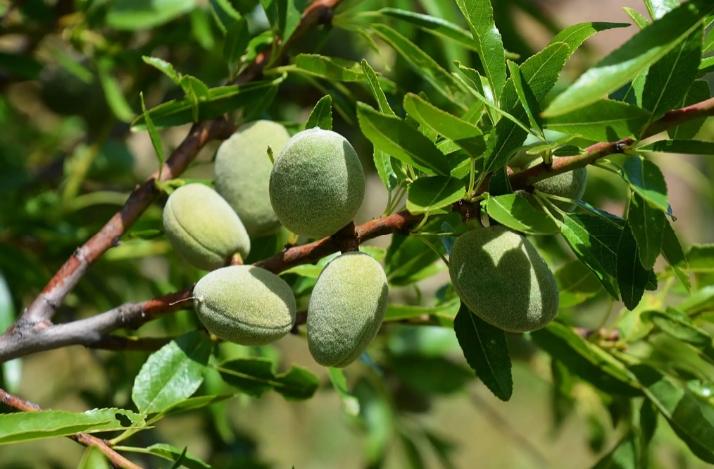
Almond tree, commonly referred to as false kamani in Hawaii is a small to medium tree specifically grown for shade and nuts. It is characterized by horizontal branches, broad leathery leaves that turn reddish-brown before falling and elliptic reddish fruits.
In Hawaii the almond tree has been extensively planted and naturalized along sandy seashores such as Puu Poa beach in Hanalei Bay, Kauai. In some places such as Kapalau Bay in Maui and Kauna’oa beach, most almonds have been uprooted and replaced with palms. Across the state, the almonds can be found growing along trails or in large farms in rural areas.
Quick Facts
- Scientific Name: Terminalia catappa
- Height: 13-40 feet
- Leaves: Dark-green, broad with a serrated margin
- Flowers: White to pale pink
- Fruit: Drupe
Also Read: Tree Species In Colorado
Banyan Trees
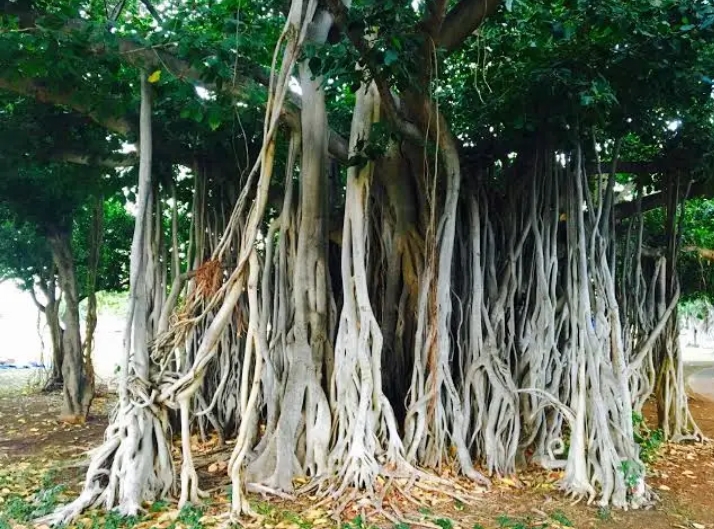
Banyan tree commonly referred to as Paniana in Hawaii is a giant tree characterized by a broad canopy, tangled web of branches and roots that hang from the top reaching very close to the ground. The tree is native to India and was gifted to Hawaii by the Indian missionaries in late 1800s. This tree is a commonplace feature of the Hawaiian landscape.
For example, in Waikiki, you can spot a Banyan tree just in front of Honolulu Zoo, inside the International Marketplace or inside the Moana Surfrider Hotel. On your way to Kuhio Beach you will also spot the tree near the Duke Statue. Still in Hawaii, if you want to see the largest Banyan tree, visit Lahaina Banyan Court Park in Maui. This is the believed to be the largest Banyan tree in all of the United States and the World.
Quick Facts
- Scientific Name: Ficus benghalensis
- Height: 20-100 feet
- Form: Broadest canopy of any tree in the world
- Leaves: Glossy-green, large and elliptical in shape
Redwoods
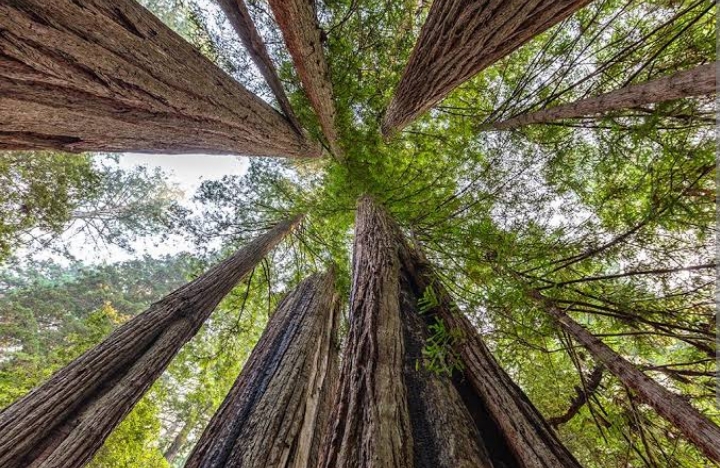
Redwoods are tall trees featuring a remarkably straight trunk, a conical crown, with horizontal to slightly drooping branches. All over North America, redwood trees are always described in superlatives: the tallest, the biggest, the oldest and most massive tree. The trees are valued for their timber in the lumbering industry. The timber is valued for its beauty, light weight and resistance to decay.
In Hawaii redwood trees have mostly been planted in forest reserves such Hilo, Honaunau, Walbou Spring and Kula Forest Reserves. While in Hawaii you can also spot the trees at Kokee State Park in Kauai and near Volcano Village in Hawaii county.
Quick Facts
- Scientific Name: Sequoia sempervirens
- Other Name: Coast redwood or California redwood.
- Height: 30-400 feet
- Trunk: Remarkably straight
- Root System: Shallow, wide-spreading lateral roots
Bermuda junipers

Bermuda juniper commonly referred to as Bermuda cedar is also common in Hawaii’s forest reserves and in some homesteads as an ornamental or hedge tree. The foliage of this tree is produced in blue-green sprays and features almost yellow cones.
Its heavy, aromatic reddish timber is highly valued in Hawaii due to its low density, durability and workability. Examples of Bermuda juniper trees may be seen at Waiahole, Oahu, Waiahou Spring Reserve (Olinda), Maui and Pepeekeo Arboretum.
Quick Facts
- Scientific Name: Juniperus Bermudian
- Other Name: Bermuda cedar
- Height: 20-60 feet
- Bark: Sheds in strips
- Foliage: Blue-green sprays
Breadfruit Trees
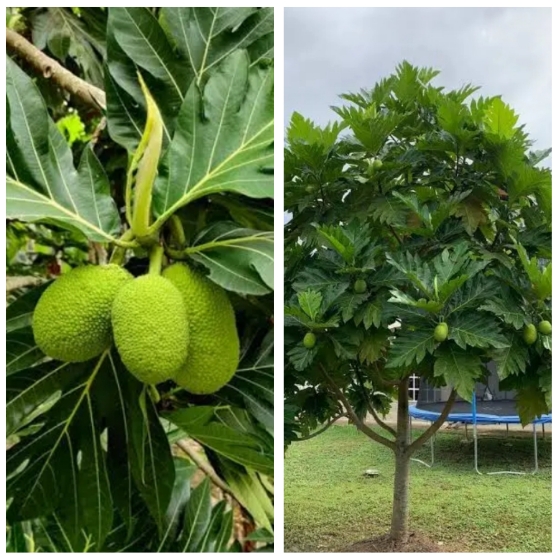
Breadfruit trees have been cultivated in Hawaii since antiquity and it is one of the highest-yielding food plants in Hawaii. It bears fruits that are similar in appearance to the Jackfruit. Its name is derived from the texture of the moderately ripe fruit when cooked, similar to freshly baked bread and having a potato-like flavor.
Also referred to as ‘Ulu’ in Hawaii, breadfruit trees typically grow between 40 and 60 feet in height with parts of the tree yielding milky sap (latex). Breadfruit trees are found on all of the main Hawaiian Islands and its fruits along with taro and coconut plays a big in Hawaiian history, tradition and cuisine.
Quick Facts
- Scientific Name: Artocarpus altilis
- Height: 20-60 feet
- Leaves: Large, glossy-green
- Fruit: Greenish to brownish green with a white, fibrous pulp
Also Read: Palm Trees That Grow Well In South Carolina
Coconut Palm Trees

Coconut trees also referred to as Nui in Hawaii grow in low-lying areas often close to the ocean’s edge. In Hawaii, the tree is primarily planted for its decorative value and is chiefly thought of as a tall or dwarf palm. The trees can grow up to 100 feet tall with relatively large featherlike fronts that break away cleanly at maturity, leaving the trunk smooth.
When in Hawaii, you’re highly likely to see coconut trees growing wild throughout the islands that make up Hawaii, but in Kauai, the east coast and in Kauo the uninhabited northwest islands is where you can spot numerous clusters of groves to admire. Kapuaiwa Coconut Beach Park holds one of Hawaii’s oldest and most sacred coconut groves.
Quick Facts
- Scientific Name: Cocos nucifera
- Height: 15-100 feet
- Mature Fruits: Oval with a thick fibrous husk
- Leaves: Large, featherlike in appearance
Silk Oaks
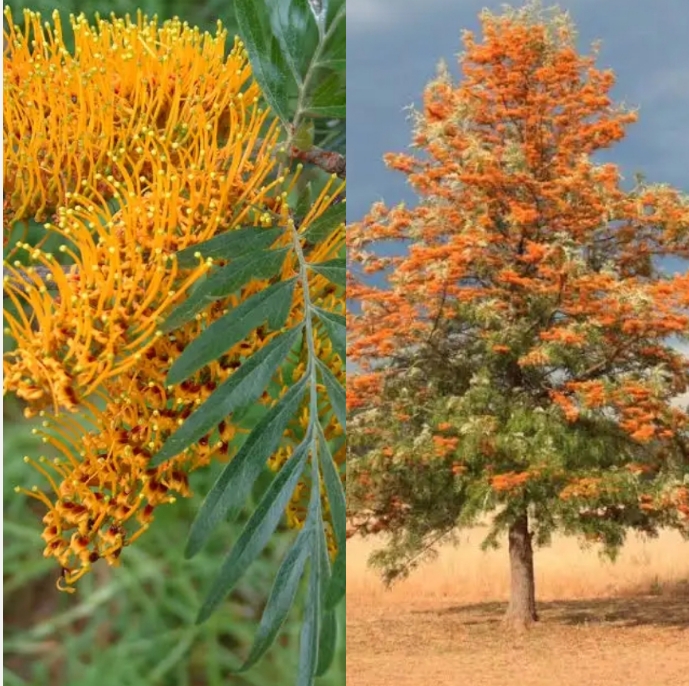
Silk oak trees are also a commonplace feature of Hawaii mostly planted for shade, ornamental and reforestation reasons. They are generally medium-sized to large trees growing between 40-70 feet featuring a straight trunk, numerous branches with pinnate and deeply dark-green lobed fernlike leaves. Introduced to Hawaii around 1880 from Australia, Silk oaks are the second most planted trees in Hawaii after the Eucalyptuses.
While in Hawaii, you can still spot these trees growing wild in pastures and rangelands. You can also find them growing extensively on Kapapala Ranch in Ka’u, Huehue Ranch in North Kona and Honouliuli Forest Reserve.
Key Highlights
- Scientific Name: Grevillea robusta
- Size: 40-70 feet
- Bark: Light-gray, thick, rough and deeply furrowed.
- Leaves: Dark-green, deeply lobed fernlike leaves with whitish or ash-like hairs
Gunpowder Tree
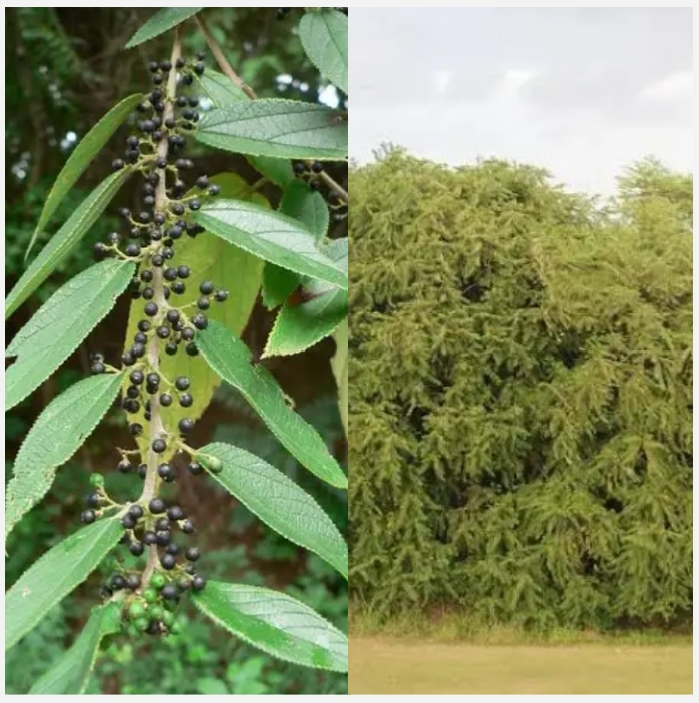
Gunpowder tree also referred to as charcoal-tree or nalita in Hawaii grows up to 100 feet with a heavy branching, spreading crown and slightly buttressed roots or swollen base. This tree is said to be a good source for charcoal that can be used for gunpowder, thus the common name.
In Hawaii, Gunpowder tree grows in many areas and plantations as a timber tree and as an ornamental because of its fast growth rate. Its growth range extends into forest openings in moist lowland areas. It is particularly common around Hilo airport and its vicinity.
Key Highlights
- Scientific Name: Trema orientale
- Other Names: Pigeon wood, Indian charcoal tree
- Size: Grows between 20-100 feet
- Bark: Outer bark, light-gray; Inner bark, pink
- Leaves: Light-green, Oval in shape with finely toothed edges
Lapalapa

Lapalapa is a flowering tree that rarely reaches 30 feet in height with a small crown. This tree resembles the famous quaking Aspen tree due to nature of the petiole, the connection of the leaf to the stem. The petioles are flattened which makes the leaves flap in the wind. When the tree is cut, it gives off a strong carrot-like odor.
The lapalapa tree is endemic to the Hawaiian Islands of O’ahu and Kaua’i. If you’re in Hawaii, just visit the mountainous and hilly sides of O’ahu or in Kaua’i around the wettest Mt. Waialeale area you will see these trees growing in plenty over there.
Key highlights
- Scientific Name: Cheirodendron platyphyllum
- Size: 10-28 feet in height
- Leaves: Opposite and palmately compound
Cook Pine
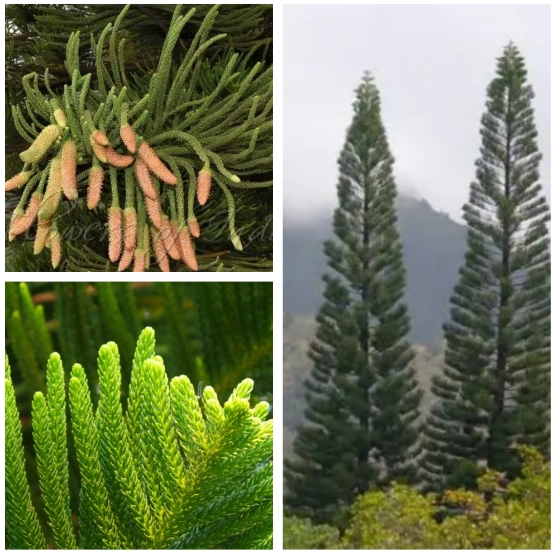
Cook pine trees are the most common and widespread type of pines in Hawaii, from the biggest island Hawaii to Maui, Oahu, Kauai to Molokai. These pines are often if not sometimes confused with the Norfolk Island pine, especially when the trees are younger. Cook pine can grow beyond 150 feet but in many parts of Hawaii you will find them growing at smaller heights featuring horizontal branches and a straight trunk. The bark of Cook pine peels off in thin strips and is rough, resinous and somehow dark-grey in color.
Key Highlights
- Scientific Name: Araucaria columnaris
- Other Name: New Caledonia pine
- Size: 30-100 feet in height
- Leaves: Needle-like leaves
Spanish Cedar
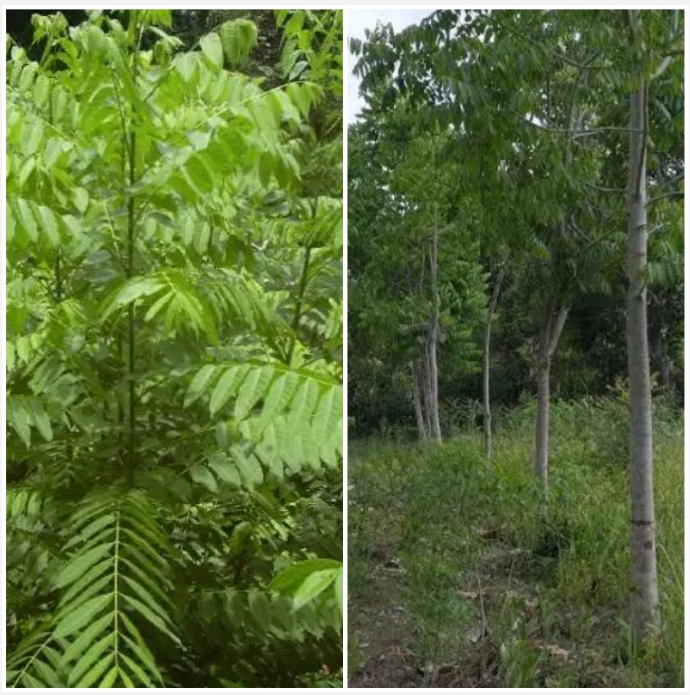
Spanish cedars are deciduous in nature and mostly common in Hawaii’s Forest reserves and in homesteads growing as ornamental trees. The trees generally grow up to 100 feet with a straight trunk with an irregular crown of pinnately compound leaves. Though these trees are not true cedars but resembles most true cedars in many aspects from its wood to aroma etc. In many forest reserves in Hawaii, you will find the Spanish cedar growing scattered around Mahogany trees.
Key highlights
- Scientific Name: Cedrela odorata
- Other Name: Cuban cedar
- Size: Grows between 30-100 feet tall
- Leaves: Pinnately compound
Also Read: Trees That Grow Well In Dry & Hot Arizona
Slash Pine
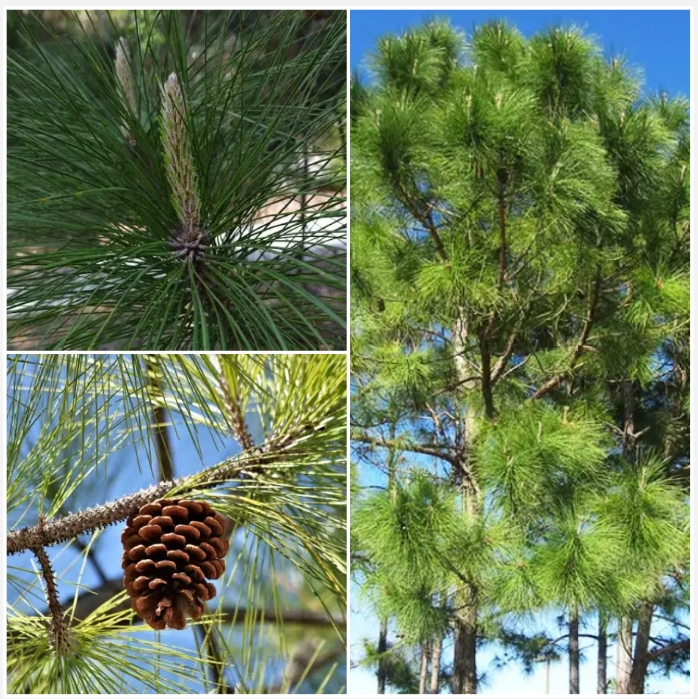
Slash pines have been planted in very many places in Hawaii, especially in Forest reserves in Kauai and in the south-facing ridges of Molokai. Slash pines have also been planted at the Waiahou Spring and Kula Forest Reserves in Maui. These trees feature long straight trunks with branches in horizontal tiers or rings. The bark on most slash pines is dark-gray in color, cracking off, exposing dark brown layer. Historically, slash pine has been an important economic timber for naval stores, turpentine and resins.
Key highlights
- Scientific Name: Pinus elliottii
- Other Names: Swamp Pine, Yellow slash pine, Southern Florida Pine
- Size: 30-100 feet
- Leaves: Needle-like
- Cones: Glossy red-brown
Shamel Ash
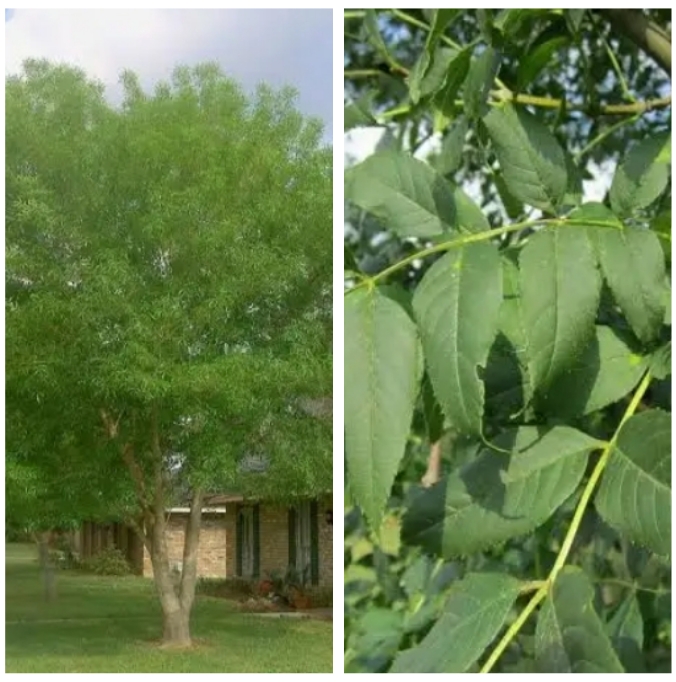
Shamel ash is a medium-sized tree that can be found growing in parks, commercial areas and home landscapes such as front yards and backyards all over Hawaii. The tree generally grows between 20-80 feet with spreading branches which in effect result in a strikingly beautiful, large natural shade. In Hawaii this tree is considered invasive and disruptive to native ecosystem due to its ability to rapidily form from a single species. In places like Kamakou and Waikamoi Preserves, the tree is almost being considered a threat due to its massive spread.
Key Highlights
- Scientific Ash: Fraxinus uhdei
- Other Name: Evergreen ash
- Size: 20-80 feet
- Nature: Fast growing
Rainbow Eucalyptus
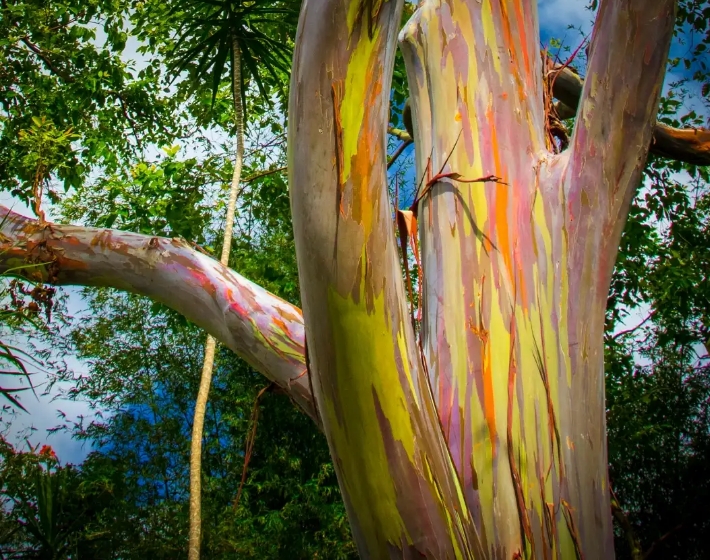
Rainbow eucalyptus is the most popular eucalyptus tree species in Hawaii where it is described by many as the most beautiful tree in the world. This tree features a multicolored bark and an open crown. The tree gets its rainbow colors when its orange-tinted bark sheds in strips, revealing streaks of pale green, red, orange, grey and purplish brown.
These trees can be found scattered throughout Hawaii. You can find them along the road to Hana, at Ke’anae Arboretum and botanical garden in Maui, the Keahua Arboretum in Kauai and Kona Cloud Forest on the Big Island. You can also find these eucalyptuses towering over the Oahu Dole Plantation, Wahiawa Botanical Gardens, as well as the Honolulu Zoo.
Key Highlights
- Scientific Name: Eucalyptus deglupta
- Other Names: Rainbow gum or Mindanao gum
- Main Feature: Multicolored bark
- Size: 80-240 feet
- Leaves: Dark-green
Golden Shower
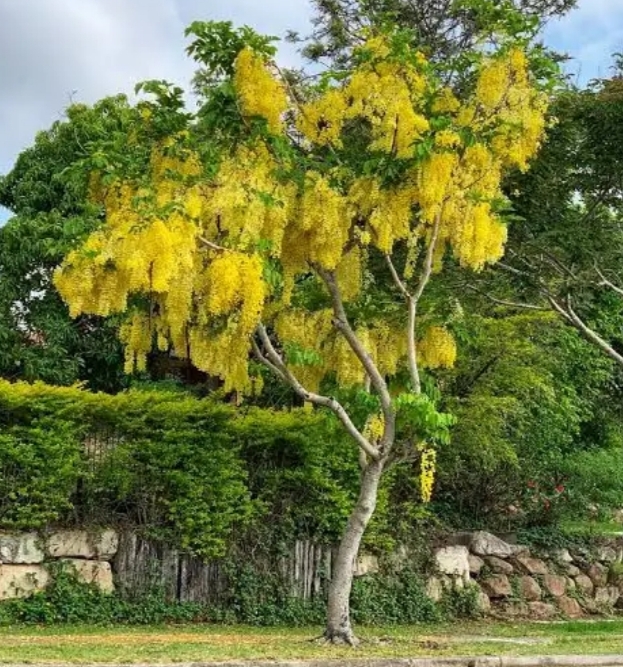
Golden shower is a medium-sized tree or large shrub with spreading branches that form an open crown and characterized by profuse flowering. This tree is widely grown in homestead gardens as an ornamental tree around Hawaii. During flowering season, yellow flowers entirely cover the crown of this tree. Golden shower has a strong and durable wood and is frequently harvested for fence posts, making tool handles, cabinets and other furniture.
Key Highlights
- Scientific Name: Cassia fistula
- Other Name: Indian laburnum, Purging cassia, Pudding-pipe tree
- Size: 30-66
- Flowers: Yellow and produced in pendulous racemes
Norfolk Pine
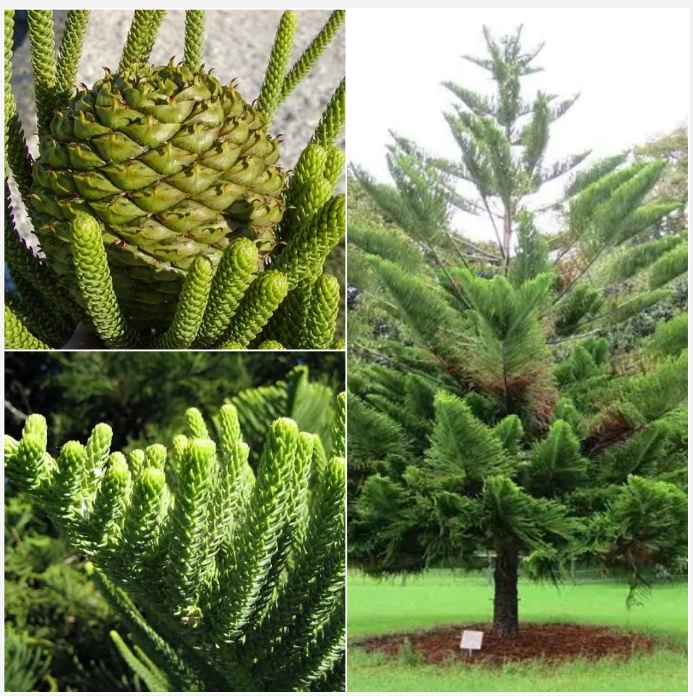
Norfolk pine commonly referred to in Hawaii as Norfolk Island pine is a graceful, pine-like tree with a lacy, delicate appearance. In other words, its branches are arranged in symmetric whorls or slightly drooping and the trunk is typically straight featuring a dark-grey bark with horizontal cracks. The weirdest thing about this tree is that, when you cut one of its lateral branches and root it in the soil, it will continue to grow horizontally and never produce an erect stem.
This tree is everywhere on all the Islands of Hawaii. It can be seen above St. Louis Heights in Honolulu, at Schofield Barracks and in Waiahole Valley on Oahu, at Lanai city, at Mahinahina near Lahaina, Maui and at very many other locations. The tree is commonly used for lumber and veneer production.
Key Highlights
- Scientific Name: Araucaria heterophylla
- Other Names: Polynesian pine, Star pine or Triangle tree
- Height: 40-200 feet
- Leaves: Scale-like leaves
Also Read: Japanese Tree Species (Trees Native To Japan)
Portuguese cypress
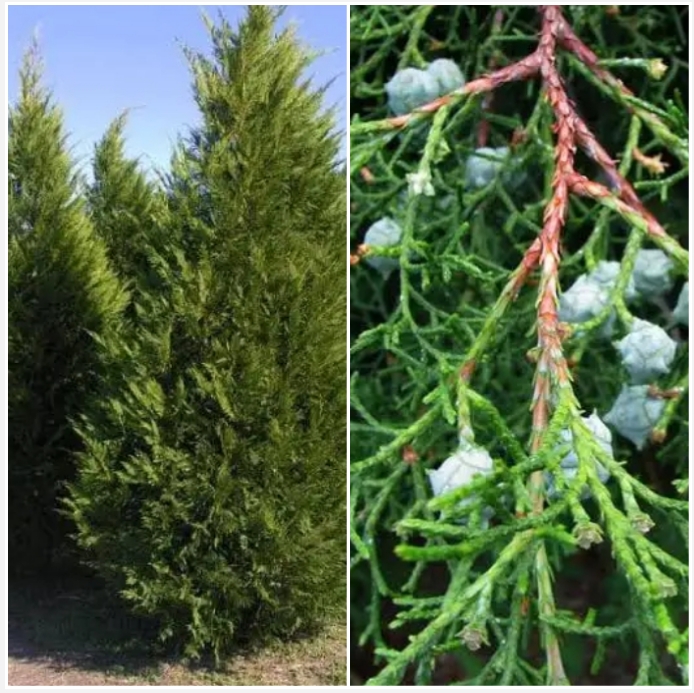
Portuguese cypress are relatively large conifer trees commonly grown in cool uplands of Hawaii as, ornamental, windbreaks or shelterbelts. The trees feature a broadly pyramidal crown and pendulous branches. The foliage grows in dense sprays, dark green to somewhat yellow-green in color. The tree produces small oblong cones that are initially green before turning brown.
Also, in Hawaii, you can find these trees scattered in Kapapala, Kahikinui, Hamakua, Honolulu Watershed, Ko’olau and Pu’u Wa’awa’a Forest Reserves.
Key Highlights
- Scientific Name: Cupressus lusitanica
- Other Name: Mexican cedar or Cedar of Goa
- Height: 40-120 feet
- Leaves: Dark-green, scale-like
Hala Tree
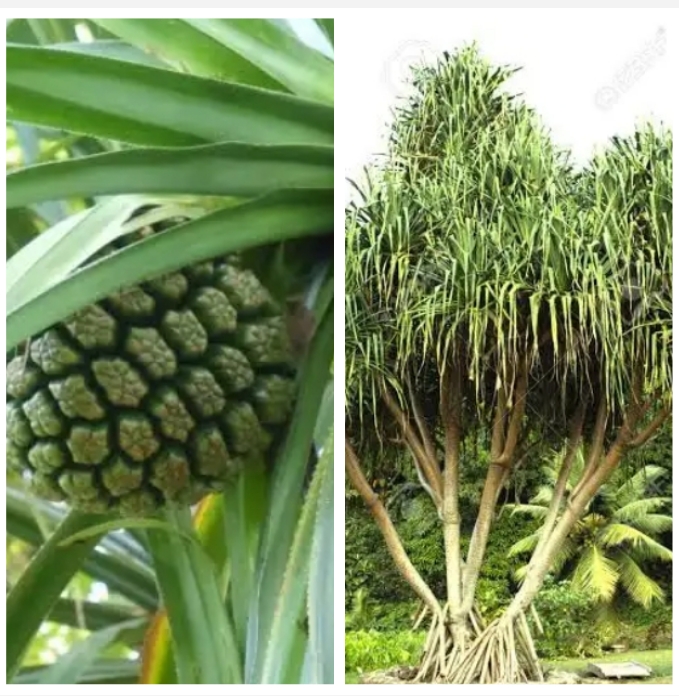
Hala tree is a generally a small tree featuring a slender trunk with brown ringed bark. Branches grow off the main trunk at wide angles featuring spirally arranged leaves. Roots sometimes grow along the branches and they grow at wide angles in proportion to the trunk. Female trees bear an edible fruit that characteristically resembles a pineapple fruit.
Hala trees are everywhere throughout the Hawaiian Islands with the exception of Kaho’olawe. Large number of Hala trees are usually common along the coastal lowlands typically near the edge of the ocean.
Key Highlights
- Scientific Name: Pandanus tectorius
- Other Names: Thatch screwpine, Tahitian screwpine or Pandanus
- Height: 10-35 feet
- Leaves: Long and narrow, light to dark-green
Jacaranda
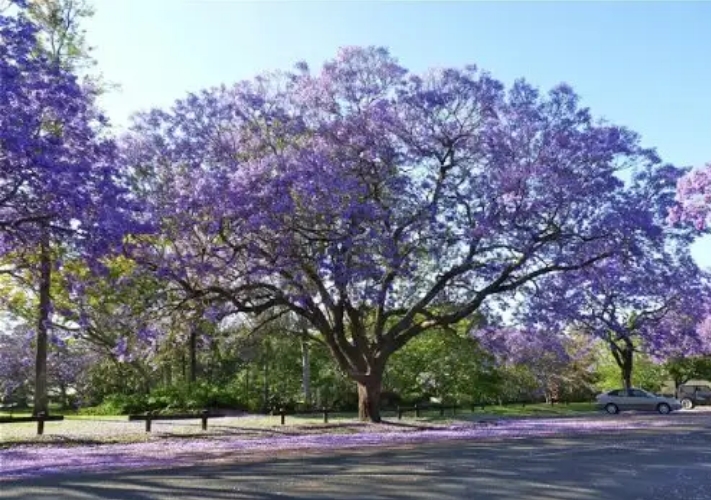
Jacaranda tree is also among the beautiful trees that graces the Hawaiian landscape. According to the locals, the tree is not native to Hawaii but was introduced to the Island in the 1900s by the Portuguese farmers and ranchers who settled in the Areas of Kula, Pukulani and Keokea.
Between April and May if you happen to be on any of the Hawaiian Islands, particularly Upcountry Maui, you will observe many Jacaranda trees adorned in massive blooms. This trees generally grow between heights of 15 to 40 feet with slender, slightly zigzag twigs.
Key Highlight
- Scientific Name: Jacaranda mimosifolia
- Other Names: Blue Jacaranda, Black poui, Jacaranda
- Height: 15-40 feet
- Leaves: Long and bi-pinnately compound
Koa Trees
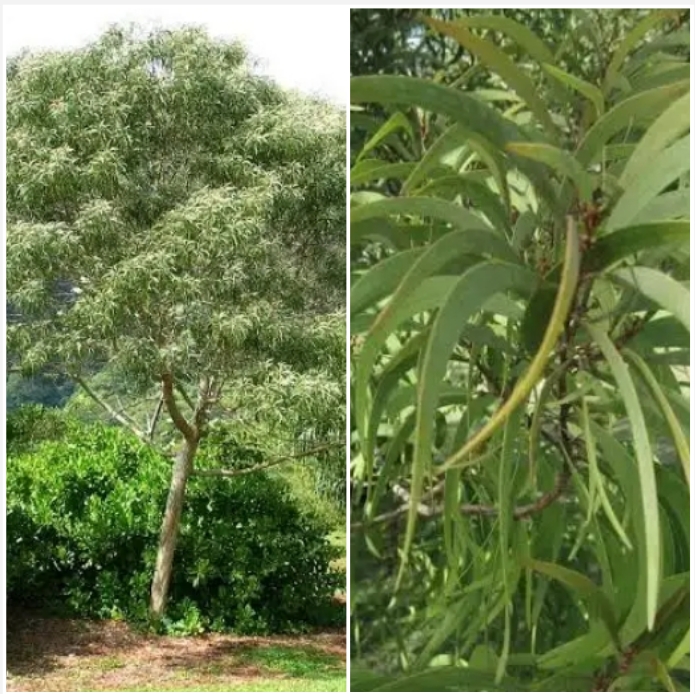
Koa tree is a flowering tree that generally grows between 15 and 40 feet. It is among the popular fast-growing trees in this part of the world and also ranks among the oldest tree species in the state. These trees can be found naturally growing in almost every nuke and cranny of Hawaiian Island with many growing on Hawai’I, Maui and O’ahu. Its name in Hawaiian language means brave, bold, fearless or warrior.
Key Highlights
- Scientific Name: Acacia Koa
- Other Name: Koa
- Height: 15-60 feet
- Leaves: Bipinnately compound
- Flowers: Pale-yellow
Monkeypod tree
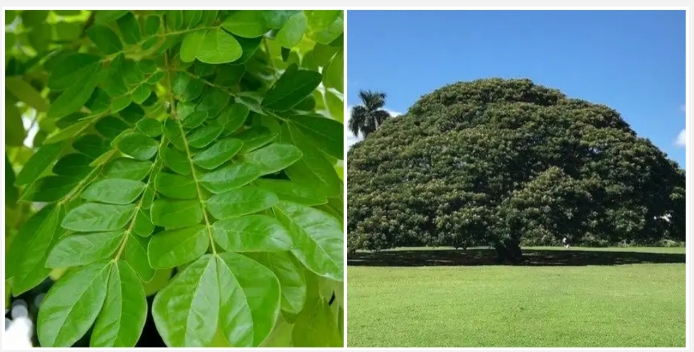
Monkeypod tree commonly referred to as rain tree is among the easiest trees to come-by and identify in Hawaii. It features a wide umbrella-shaped crown occasionally with pinkish flowers. This canopy is what makes this tree special. The leaves of this tree fold in rainy weather and in the evening, hence the names rain tree or five o’clock tree.
Key Highlights
- Scientific Name: Samanea saman
- Other Name: Rain tree or Five O’clock tree.
- Height: 30-80 feet
- Flowers: Pinkish
- Where to spot it: Moanalua Gardens on Oahu
Sausage Tree
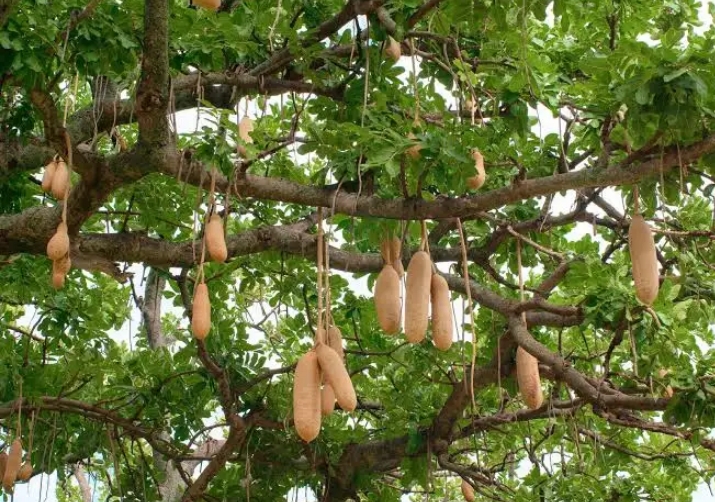
Kigeli tree is commonly referred to as sausage tree, because it bears a relatively large fruit that characteristically resembles a sausage tree. The sausage tree generally grows between 20-60 feet with spreading branches. In Hawaii this tree blooms from August to November. The blood-red, tulip-shaped flowers open one at a time at night on long, rope-like stalks that hang down from the limbs. The sausage tree is a common sight in Ala Moana Beach Park, UH Manoa campus and Waikiki.
Key Highlights
- Scientific Name: Kigelia africana
- Common Name: Kigeli tree
- Hight: 20-65 feet
- Main Feature: Sausage-like fruit
Also Read: Avocado Tree Species In North America
Royal Poinciana Tree
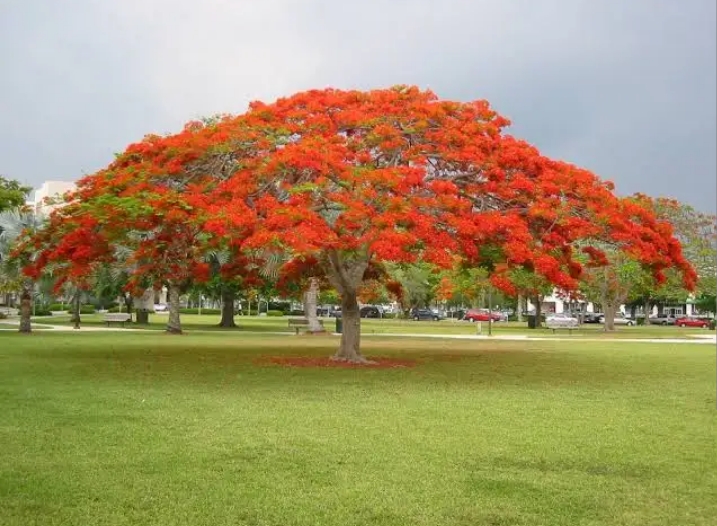
Royal poinciana is among the most popular ornamental trees on Hawaii islands. According to local Hawaiians, this tree was imported to Hawaii in the late 19th century by the great botanist Dr. Hillebrand. This tree generally doesn’t grow tall, but will a broad, spreading flat crown and fern-like leaves with orange-red flowers. These lovely flowers first appear in clusters between May and July and can stay on the tree for a month or more. The tree’s flat beanpods hang from the tree year-round and are first green and then black in color.
Key Highlights
- Scientific Name: Delonix regia
- Other Name: Flamboyant, Phoenix flower
- Height: 10-30 feet
- Main Feature: Fern-like leaves with orange-red flowers
Haleakala Sandalwood
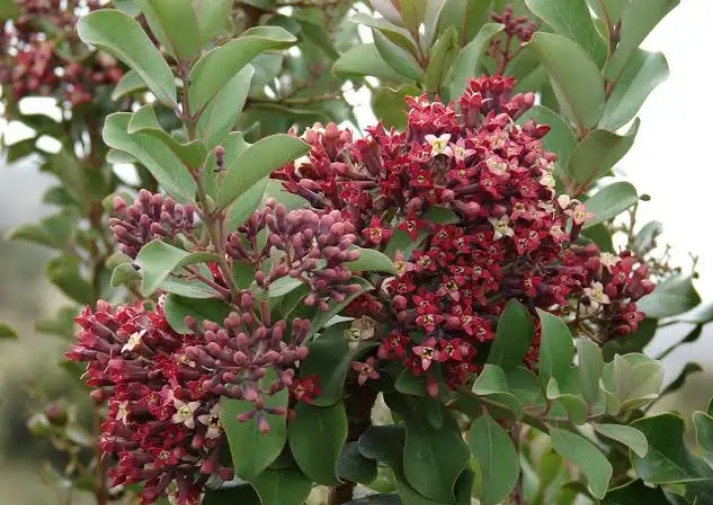
This is a shrub or a small flowering tree commonly found on the islands of Maui, Lanai and Molokai in Hawaii. The tree features green oval glaucous leaves with cream-colored to red in bud flowers. These flowers are a main source of nectar for native Hawaiian honeycreepers like the Maui amakihi.
Key Highlights
- Scientific Name: Santalum haleakalae
- Other Name: Iliahi
- Height: 10-15
- Flowers: Cream-colored
- Fruit: Reddish to black drupes